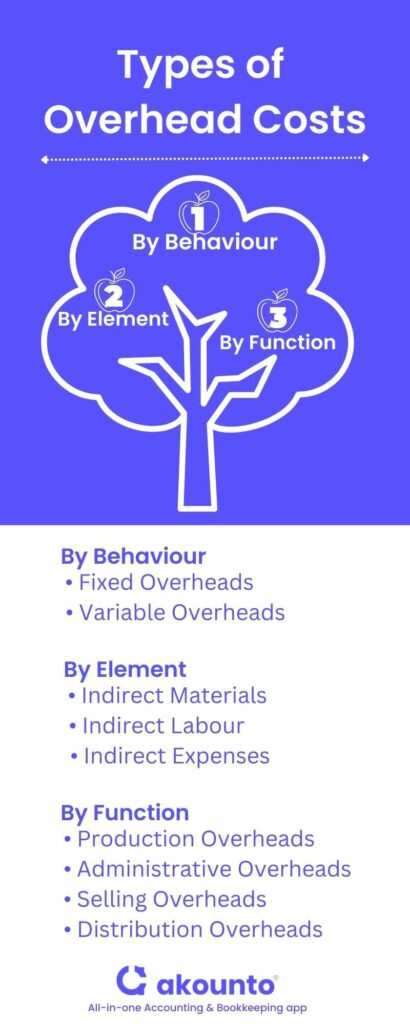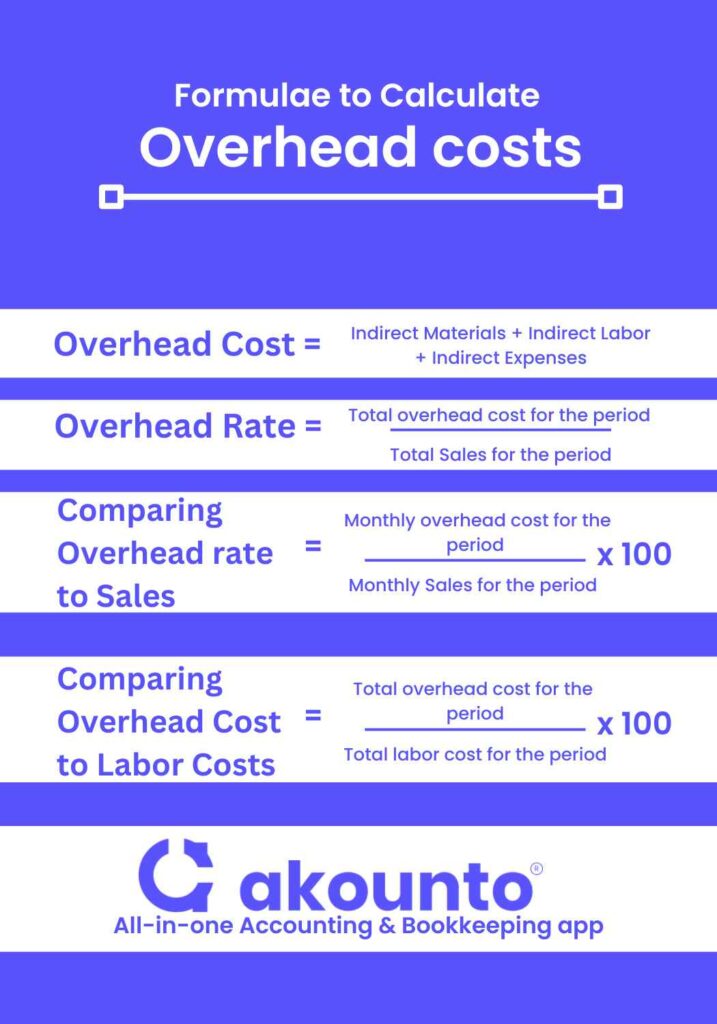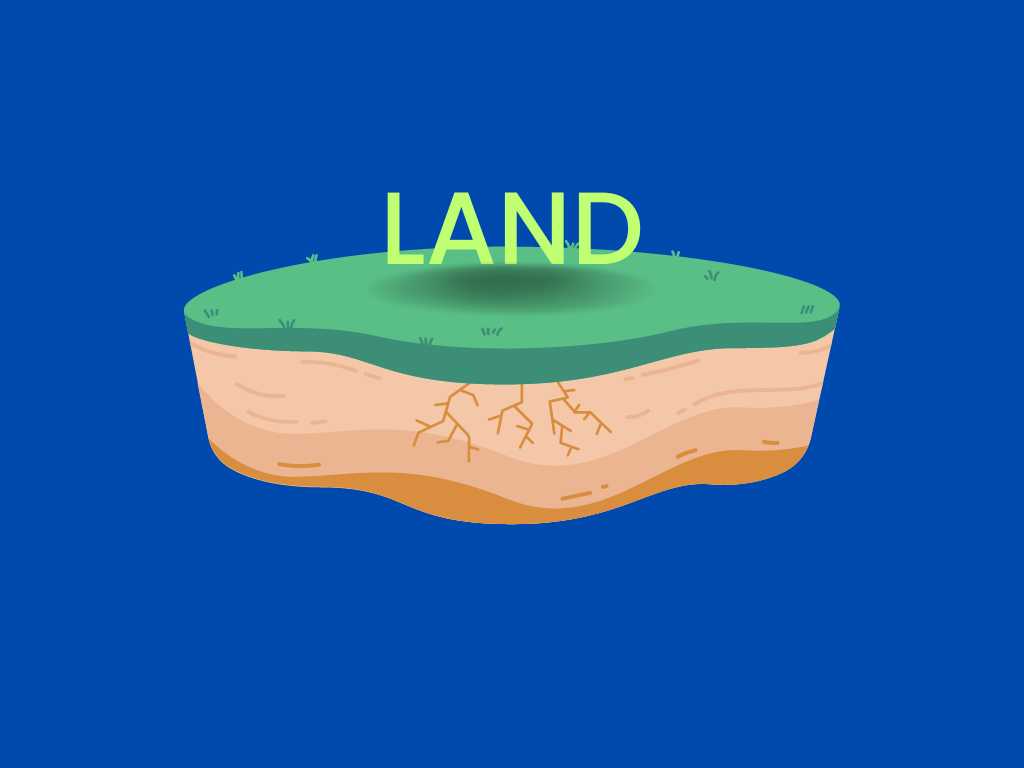Overhead costs are indirect costs associated with running a business on a day-to-day basis that is not directly related to the production of the business output.
What’s covered in the article
Companies classify overhead costs in terms of behavior, elements, and functions.
Behavior overhead costs include fixed, variable, and semi-variable overhead costs. Elements overheads include indirect labor, materials, and expenses. Functions-based overhead involves manufacturing overhead, selling overhead, distribution overhead costs, and administrative overhead costs.
In contrast, direct costs, like raw material or labor, classified as cost of goods sold (COGS) and cost of services (COS) that a business incurs to create products and services, are excluded from the overhead rate.
The overhead allocation rate is determined by dividing the overhead cost by an allocation measure—for example, the number of machine hours or direct labor hours. In doing so, a company can decide how to allocate expenses to different projects or services.
Businesses must calculate the overhead cost and direct expenses to determine long-term product or service prices. Doing so will allow the business to earn profits on a long-term basis.
Examples of overhead costs
A business’s overhead costs vary depending on its nature, size, and the industry in which it operates.
Some examples of common overhead costs include:
- Government Fees;
- Business licenses;
- Rent;
- Utility Costs;
- Property taxes;
- Insurance;
- Employee Salaries & Perks;
- Professional services (e.g., accounting, legal expenses);
- Depreciation;
- Advertising expenses.
All overhead expenses are reported in the company’s income statement for the accounting period in which they occur. Unlike operating expenses, these indirect expenses cannot be traced to a specific business activity or cost unit. And provide critical support for the overall profit-generation activities of the company.
What are Different Types of Overhead Costs?
Overhead costs can be broken down into Behavior, Elements, and Functions business costs.

Behavior Overhead Classification
- Fixed overhead costs – are costs that are fixed in nature. They do not change in a given period (usually month-to-month) and don’t get impacted by the increase or decrease in productivity or volume of output manufactured by the business.
- Examples of fixed costs include; salaries of full-time employees, payment of interest on a mortgage, office space rental costs, property tax, depreciation of assets, etc.
- Variable overhead costs – are costs that vary or fluctuate in direct proportion to the output volume manufactured by the business activity.
- Examples of variable costs include; accounting fees, legal expenses, office equipment and its repair costs, office supplies, administrative expenses, shipping costs, hiring seasonal or temporary employees, advertising costs, audit fees, etc.
- Semi-variable overhead costs – are costs that are partly fixed and partly variable in nature. Thus, semi-variable costs do not fluctuate in direct proportion to business output.
Examples of semi-variable costs include; phone service expenses, employee bonuses, overtime, sales commission, utilities, cleaning services, etc.
Elements Overhead Classification
- Indirect Materials – refers to the overhead costs of materials consumed as part of the production process. But are not integrated into copious amounts in the products or services.
- Examples of indirect materials are fittings, fuel, cleaning supplies, oil for lubrication, etc.
- Indirect labor – refers to wages paid to workers not engaged in converting raw materials into finished goods and their delivery. But add to the production costs.
- Examples of indirect labor are overtime pay, the salary of a foreman, night shift bonuses, etc.
- Indirect Expenses are expenses related to miscellaneous costs that aid the business’s day-to-day activities.
- Examples of indirect business costs include asset depreciation, rent of business space, postage, printing, insurance, research, development, etc.
Functions Overhead Classification
- Manufacturing Overheads – refer to indirect costs such as indirect material, indirect labor, and indirect expenses incurred in the production process of goods and services. These business expenses are also known as Factory Overheads and Work Overheads. Examples of manufacturing overheads are payment of electricity bills, raw materials for packaging, repair costs for office machinery and spare parts, etc.
- Administrative Overheads – comprises all costs incurred in discharging the accounting and administrative services for the business. These costs are impossible to associate the same with the per-unit cost of production. Example of administrative costs includes salaries of the company’s employees, rent and insurance of office building, depreciation of office furniture, etc.
- Selling Overheads – involves expenditure incurred in advertising, marketing, and selling of products. Depending on the business’s nature, it can include costs related to research overhead, manufacturing overhead, maintenance overhead, warehousing overhead, sales point overhead, or transportation overhead.
- Distribution Overheads – involves business spending to deliver and transport products and services to their final customers/users. Examples of distribution costs include rent for warehousing, packaging charges, fuel costs of delivery vehicles or company cars, etc.
A business owner can classify the overhead costs based on the nature of his business and then calculate the total overhead cost. Cost accounting is a specific domain of accounting that is useful for tracking and analyzing costs and helps management to optimize the production process.
Calculating Overhead Cost: Formula and Steps
Formulae to calculate overhead costs

Steps to calculate overhead cost
There are four steps involved in calculating overhead costs.
- Identify & Add all Overhead Costs – Make a comprehensive of all the indirect business costs (like taxes, rent, office equipment maintenance, etc.) incurred during a specified period. A sum of these will result in the total overhead costs of the company.Let us look at the example question below for a better understanding. Example 1: Find Company A’s overhead cost for December 2022 based on the information below.
- Rent = $10,000Indirect Employee Salaries = $16,000Marketing costs = $8,000Property Tax = $2,000Equipment Repairs = $2,000Office Supplies = $2,000Manufacturing supplies: $500Wages of production staff: $60
- Calculate Overhead Rate – After determining the overhead costs for the specified period, calculate the overhead rate. The overhead rate helps you understand how much you spend on overheads for every dollar you earn through products or services. Here is a numerical example for your better understanding. Example 2: CalculateCompany A’s overhead rate if its overhead cost is $40,000 and Monthly Sales are $200,000Solution: We will apply the Overhead Rate formula to calculate the overhead rate. Overhead Rate = Total overhead cost for the period / Total Sales for the period=> 40,000/200,000 = 0.20Twenty cents or (0.20) is allocated to overhead costs per dollar of revenue the business generates.
- Compare Company’s Sales – To set future prices and budgets, we need to know the percentage of a dollar, i.e., allocated to overhead costs. It can be obtained by dividing monthly overhead cost by monthly sales and multiplying it by 100.
- Compare the Labor Costs – To measure the efficient use of the business’s resources. Divide total overhead cost by total labor cost for the month and multiply it by 100 to express in percentage. The lower the percentage, the more efficiently a business uses its resources.
Reduce Your Overhead Costs With Akounto
Overhead Costs are an essential part of operating costs incurred by a company in its production of goods or rendering of services. They give businesses a realistic view of their finances. Knowing how to accurately track and manage them can help save your business thousands of dollars annually.
Akounto’s all-in-one accounting software can help you find new ways to reduce and allocate overhead expenses, do your cost accounting, and prepare efficient cost sheets, increasing your business’s net profit. To know more, visit our website today!











